Spider mites and Admes mites are active in conifers
Spider mite and Admes mite populations are starting to build. Make sure you are scouting spruce and fir for this tiny pest that can cause big problems.
We are beginning to find mites active on several conifer species. Although the insects may be actively feeding by now, we often don’t see the damage until later in the growing season. If you suspect mite problems, perform a foliage check. Take a piece of white paper, hold it under a branch suspected of having mites, and strike the branch hard against the paper. This should dislodge the mites, and even though they are very small, you should be able to see the dark, oval spider mites against the white background. Two of the mites we are finding are spider mites and Admes mites.
Spruce spider mites
Spruce spider mites are often a problem on fir and spruce trees, but populations can build up on nearly all Christmas tree species. Spruce spider mites are considered a cool season mite and thrive when daytime temperatures are in the 60s and 70s. Newly hatched larvae are pinkish, but turn dark green or dark red after initial feeding. Growers should keep an eye out for the dark mites or their webbing, especially if you had damage from mites last year.
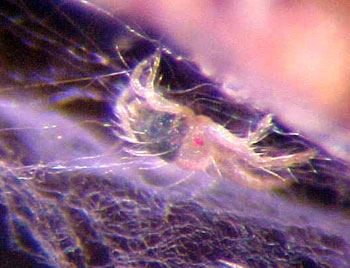
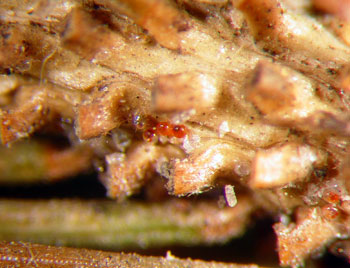
(Left) An adult spruce spider mite. (Right) Spruce spider mite eggs.
Photo credits: Howard Russell, MSU Diagnostic Services
Spider mites have tiny mouthparts modified for piercing individual plant cells and removing the contents. This results in tiny yellow or bronze speckling on the needles. When many of these feeding spots occur near each other, the foliage takes on a yellow or bronzed cast. Once the foliage of a plant becomes bronzed, it often drops prematurely. Scout the oldest foliage near the stem of the tree – that’s where the mite populations build up first.
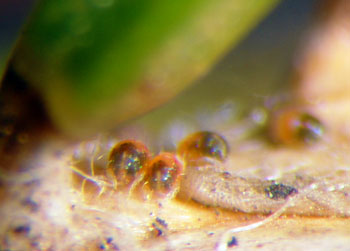
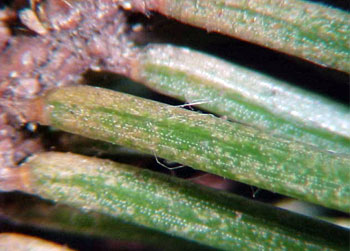
(Left) Spruce spider mite larvae. (Right) Spruce spider mite injury usually appears as yellow
speckling near the base of the needles. Photo credits: Howard Russell, MSU Diagnostic Services
Read more information on spruce spider mites from Penn State University.
Admes mite
We most often find Admes mites on white spruce or Black Hills spruce, but we will find them on Colorado blue spruce and Norway spruce as well. Admes mites are larger than spruce spider mites, have a dark red or brown body with light tan legs. Often you will see white “flocking” on the needles that are the exoskeletons left behind as immature mites molt; they are visible and look like white flocking on the needles. Feeding by Admes mites causes yellow stippling or bronzing of the foliage, similar to damage caused by other spider mites. When damage is heavy, some of the needles turn brown and eventually drop. See the Michigan State University Extension factsheet on Admes mite for more information.
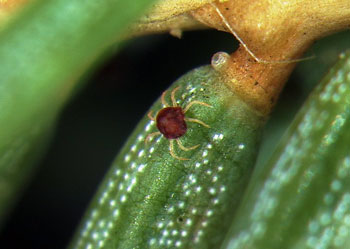
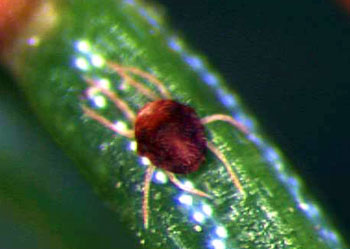
(Left) An adult Admes mite. (Right) Female in characteristic resting position.
Photo credits: Rayanne Lehman, Pennsylvania Department of Agriculture, Bugwood.org
Predatory mites are important biological control agents for plant-feeding mites like spruce spider mites and Admes mites. It is important to conserve and protect the populations of native predatory mites that will be present in your Christmas tree plantation. If a pesticide is needed to control damaging levels of mites, it is preferable to choose a mitecide that won’t harm predatory mites and predatory insects.



 Print
Print Email
Email




